Social Media and Medicine (#SoMe): How to Use Technology to Increase Knowledge Translation and Self-Directed Learning Processes
History Behind Article:
We’re clinicians that live and practice in exponentially different ways with one seemingly universal commonality: We’re busy.
Factually, we lose attention and retention with initial memory formation between 20-40 minutes via axonal projections from the hippocampus to the cerebral neo-cortex [1]. Learning requires modification from some of the most basic synaptic interfaces at the dendritic level. The dynamic nature of these dendritic spines are important for neuro plasticity and our ability to take on new information [2].
After formal education and residency, we are expected to remain clinically competent and synaptically sharp in a world inundated with information, tasks, and projects. I have earned the title of Doctor- now how do I maintain this perceived clinical acuity and sharpness that my peers and patients expect of me independently?
In graduate school and residency we’re handed information. It is easy to take for granted the work and effort it takes to be caught up on the latest research and trends in medicine. More importantly, how to stay passionate while minimizing frustration levels with streamlining and accessing seemingly endless amounts of information. What’s relevant? Did I just waste 20 minutes reading an article that was pointless?
As stated in my original blog post, I hope to share my passion and authentic curiosity for medicine as well as facilitate passionate conversation with the intention of creating better clinicians and self-directed learners.
In an effort to guide you through my process, I will share the educational, social media and research pearls that have set me up for success and kept my synapses firing in 2014.
What To Expect:
At any given time we have an abundance of external distractions inundating us with pings, alerts, scrolls, vibrations, etc. I’m fairly certain in grad-school, I answered my remote control working on my thesis, quieting my puppy, avoiding Facebook notifications…
Sound familiar???
This leads us to the key question of this article: How do I quiet the external noise and organize myself professionally in order to become a better clinician? (And still lead a socially productive life!)
Below you will find my organizational process incorporating my present (and ever-changing) incorporation of using Social Media and Medicine to increase knowledge translation and self-directed learning processes with the intent of becoming a better doctor.
Apps and Programs I Use:
1. Feedly
2. Twitter
3. EndNote
4. Pomodoro Technique® Timer
Feedly
History:
During the 10 years of my formal pedagogical career I asked one question throughout every single college or university I attended: How do you receive new information and organize your research/medical content?
After years of disorganized manilla folders, lost papers, and bookmarks strewn across various web browsers, I learned about Feedly.
Feedly Pearls:
Feedly is a news aggregator with a beautiful User-Interface (UI) for iOS, Android, and your computer that allows you to process, receive, and sift through information in a very intuitive and minimalistic way.
Feedly allows you to organize nearly everything on the internet from peer reviewed journals, podcasts, blogs, news sites, and YouTube Channels in a list, card, or magazine view.
Feedly organizes topics with Categories. Categories are essentially folders if you would like to think about Feedly as a desk with drawers. Take the time to organize your Categories and then add your favorite journals, podcasts, etc.
The beauty of the product is that everything gets delivered to you instead of you having to seek out the information in piece meal. I equate it to going to Blockbuster or the Movie Theater back in the 1990’s and now everything is streamed and filtered to you via NetFlix, Amazon Prime, Hulu, etc via the cloud. I personally take 30-60 minutes on the weekend and sit with a cup of tea on my balcony and sift through incoming information and news streams.
I can sift from 20 to 100’s of different titles scrolling through ~5-10 pieces at a time on my iPhone or iPad (my preferential viewing style). My goals are to move through all of the content that I have in my Categories and get to Zero. Anything I see along the way that interests me, I hit Save For Later. When I get down to Zero, I then go back into my Saved For Later Category and then take the time to meaningfully go through the content that I have found interesting.
Any journal articles, podcasts, or blog posts that I deem worth keeping, I immediately store them in EndNote (see below), my Web-Browser folders or Evernote. If something is too long, I have a “Read Later” folder in both my EndNote and Web-Browser that I sit down with at a later time before I decide if I want to keep said article of interest.
[For cohesive integration of Feedly, Twitter, and Endnote see below]
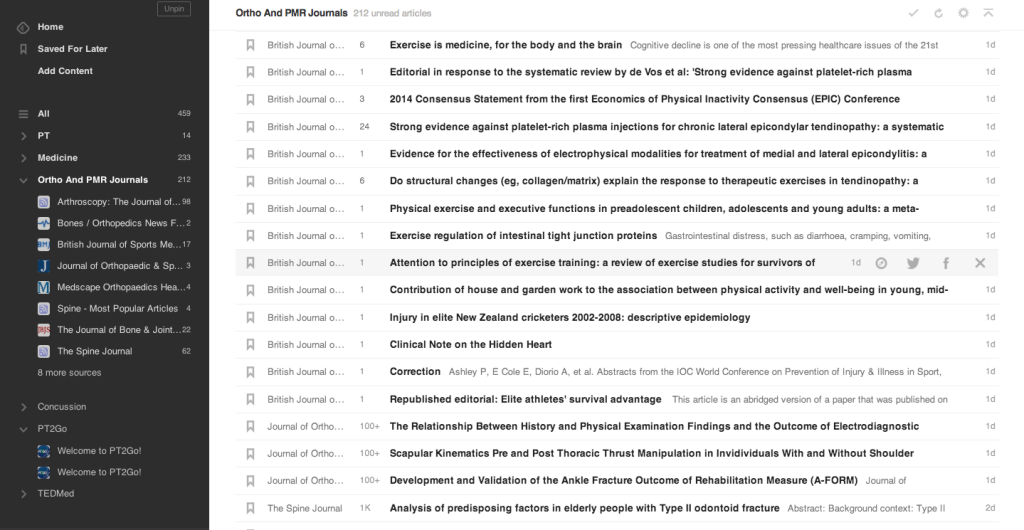
Screenshot of Feedly on MacBook Air
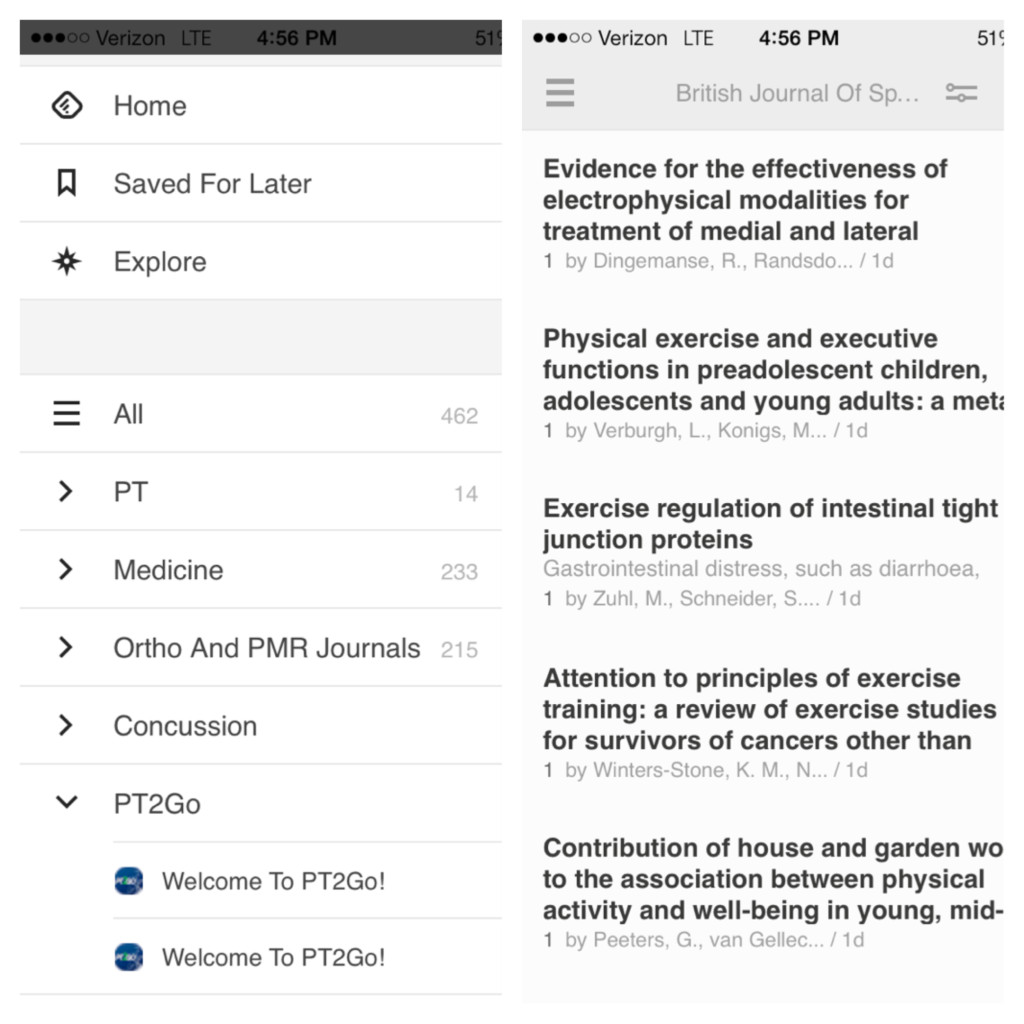 Screenshots of Feedly on iPhone
Screenshots of Feedly on iPhone
Summative Feedly Pearls:
1. Set up your Feedly on your computer
2. Find what you know
3. When you are comfortable, branch out and search broader topics of interest
4. Read and sift through articles on your iPhone/iPad or Android device taking advantage of the excellent UI
5. Work in 20 minute goal oriented time frames
History:
There are endless possibilities for how to use Twitter.
My friends in media have used Twitter for years to promote themselves and their brands. It wasn’t until recently that I became aware of a select few of my friends and colleagues using it for medicine. I started noticing that most professional organizations, hospitals, journals and conferences were also on Twitter.
If you don’t enter the space of Twitter cautiously and well planned, it can feel like you are standing on one leg, in New York City traffic, juggling ultrasound heads while trying to catch clinical and educational pearls thrown at you by the medical community…that are lit on fire (i.e.-It can be very intimidating).
The key question is: how can we streamline this and make it efficient so it’s not overwhelming?
The answer is to integrate yourself into Twitter in bite-sized digestible pieces.
Twitter Pearls:
My #1 Twitter Pearl = Create Lists.
Lists allow you to organize people, organizations and topics into smaller cohorts.
For example:
By clicking on my Twitter handle @DPT2Go and clicking on my Lists page you can subscribe to anything that I’ve made public (Medical Organizations, PT’s, Rehab Medicine, Medicine, Medical Organizations, Journals, etc). As you create more connections with people whom you follow, you essentially create this entangled web of people, places and organizations that provide you with seemingly unlimited access to experiential or voyeuristic learning opportunities.
It’s O.K. to sit back and not tweet/participate. Saving informational pieces in your Favorites is completely fine. In fact, it took me a few years to start Tweeting!
In an effort to save time searching, you can subscribe to other peoples lists as well.
If you aren’t sure where to start or where to look, I recommend the Symplur Hashtag Project specifically relating to healthcare.
Hashtags group tweets into topics so they can easily be searched later on. Popular hashtags include #PT, #DPT, #MedEd, #FOAMed, #SoMe, #Healthcare, #DPTStudent, #Hospital, etc. Conferences also create hashtags for themselves and change yearly.
Getting overwhelmed with Twitter/Feedly:
Because there are seemingly endless amounts of things on Twitter and Feedly, here are a few suggestions to get you set up efficiently:
1. Set specific goals for yourself when you signup.
2. Begin with searching and following organizations and journals that you know. e.g.: JAMA, Journal of Orthopedic and Sports Physical Therapy (JOSPT), American Physical Therapy Association (APTA), Academic Medicine, JNNT, Cochrane Reviews, PeDro etc
3. Search more global things like “Medicine” “Rehab Medicine” “Sports Medicine”, “Insert Specialty Here”, etc
4. Work in 20 min increments (See Pomodoro Technique below). It’s easy to get lost for hours syphoning through endless possibilities and connections. And remember, that’s all we really have meaningful attention for anyway…
The more gradual you enter this space of Twitter the higher likelihood of retention, maintaining interest, and knowledge transfer will occur for long term and meaningful use. Process the information at your own pace. Review it. Review it again. And find a process that works specifically for YOU.
An example of how I’ve organized some of my lists below:
Summative Twitter Pearls:
1. Twitter is essentially a microblog that allows you to communicate in 140 character bits of information
2. Create your Twitter Handle keeping the above in mind so people can reply to or include you in Tweets without compromising the 140 character limit
3. Create lists + Organize yourself early
4. Start your search with what you know
5. Branch out and search broader topics when you are comfortable
6. Remember to always be respectful and mindful of your professional presence. Seriously, the Library of Congress archives every single tweet. Read more here if you’re interested
7. Choose to be an educational voyeur or interact and engage with the Twitter community. Either way-Have fun and learn!
EndNote:
History:
Every institution I have been a part of during my educational journey has literally handed out EndNote for free. It is supposed to be the platinum package of commercial reference management software. I literally had hundreds of dollars of software handed over to me during a decade and didn’t use it.
I equate it to being handed a piece of Grade-A organic grass fed steak sans utensils or a means of cooking it. I had NO idea how to use it and the bigger issue early on in education…I didn’t really care to.
As a novice learner, I was literally inundated with so much data that I really only cared to learn to differentially diagnose X and treat Z.
The UI is not the most intuitive and past versions, to be blunt, could’ve been designed by a novice coder. However, they have spruced a few things up at Thomson Reuters to make things more intuitive and useful for the clinician on-the-go.
I am going to discuss EndNote; however, there are a few other notable players in the reference storage, PDF annotation, and citation management game (See Table 1 for comparison).
I continue to stick with EndNote because it’s what I have always used; however, I think Papers 3.0 has some serious potential with respect to cost, UI, and cross-platform access; however, until they can improve on their cloud storage and glitchy updates I’ll continue to use EndNote.
(Table 1: Reference Management Software Comparison)
EndNote Pearls:
Organize EARLY.
I have thousands of articles that I’ve accumulated over the years. I recently started from scratch and began organizing things I need and want in my present library.
Arrange your “My Groups” (similar to Categories in Feedly and Lists in Twitter) on the left part of the screen under My Library
For the most part, EndNote is very intuitive. If importing PDF’s from PubMed, WorldCat, a specific journal you have access, etc- it will migrate most data over for you. There are some instances where it won’t do that.
My advice is manually import the relevant data right away. Bare necessities: Title, Journal, Year, Author(s), Pages, Volume and PubMed ID. The PubMed ID is preferential; however, I would much rather copy and paste “24658701” than a full title, author(s), journal, etc.
The beauty of EndNote X7 is My EndNote Web which allows you to access your files on-the-go complete with annotations, highlights, etc. There are very few times I am without my laptop, however, it does make file access and citation management very easy especially during travel.
Summative EndNote Pearls:
1. Organize and setup groups right away
2. Make sure important data is migrated in with article. If not, do it manually ASAP
3. Annotate and highlight directly in EndNote allowing you to search via My EndNote Web and iPad later
Pomodoro®Timer:
The Pomodoro Technique is a time management method developed in the late 80’s by Francesco Cirillo. Essentially the technique breaks things down in to 25 minute intervals assigned to a task list that you create implementing short breaks in between each ‘Pomodori’.
I use a Pomodoro Timer on my phone. Essentially it is just a fancy timer, but it has helped me immensely with regard to breaking up larger tasks into smaller ones and decreasing distractibility. In other words, I don’t get distracted by email pings, Facebook notifications, Twitter alerts, my dogs, etc while I am working on the task at hand. I simply wait until the 5 minute break allotted to me.
So simple and highly necessary when I am in the middle of a project!
Putting It All Together:
Initially, this can all seem quite daunting; however, I can’t imagine practicing without having integrated social media and technology into my educational process. The initial time and energy spent to organize, integrate and utilize these multiple services early-on will reap tremendous rewards for the you as a self-directed-forever learner.
Good luck in your educational journey and continue to stay hungry, engaged and passionate!
Cheers,
Jessica
Twitter Handle: @DPT2Go
Email: Jessica at PT2Go dot Co
Disclosures: None
References:
1. Squire LR, Zola-Morgan S. The medial temporal lobe memory system. Science. 1991;253(5026):1380-1386.
2. Bhatt DH, Zhang S, Gan WB. Dendritic spine dynamics. Annu Rev Physiol. 2009;71:261-82.
3. http://library.med.utah.edu/WebPath/TUTORIAL/LEARN/LEARN16.html (Accessed May 24, 2014).

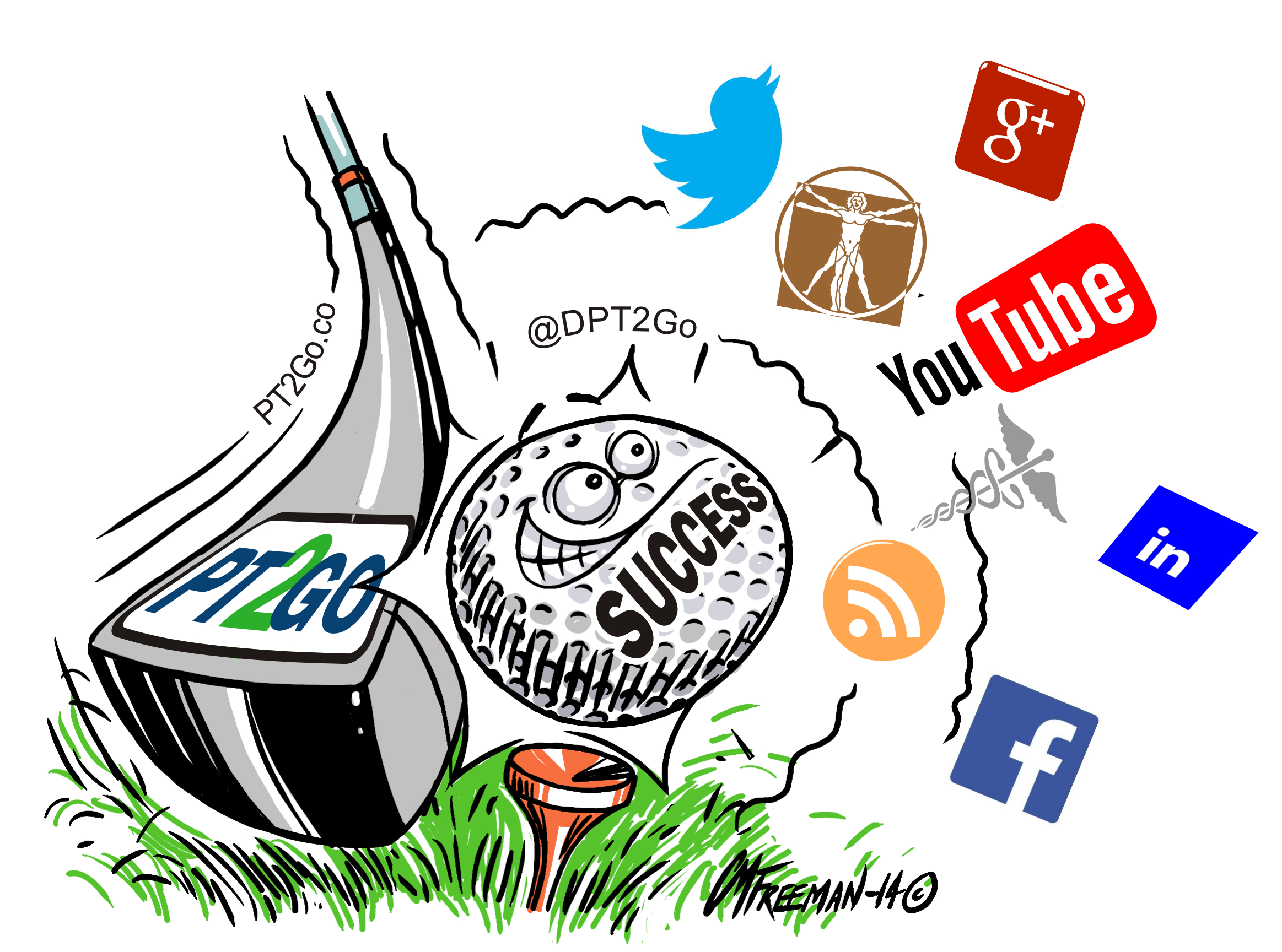

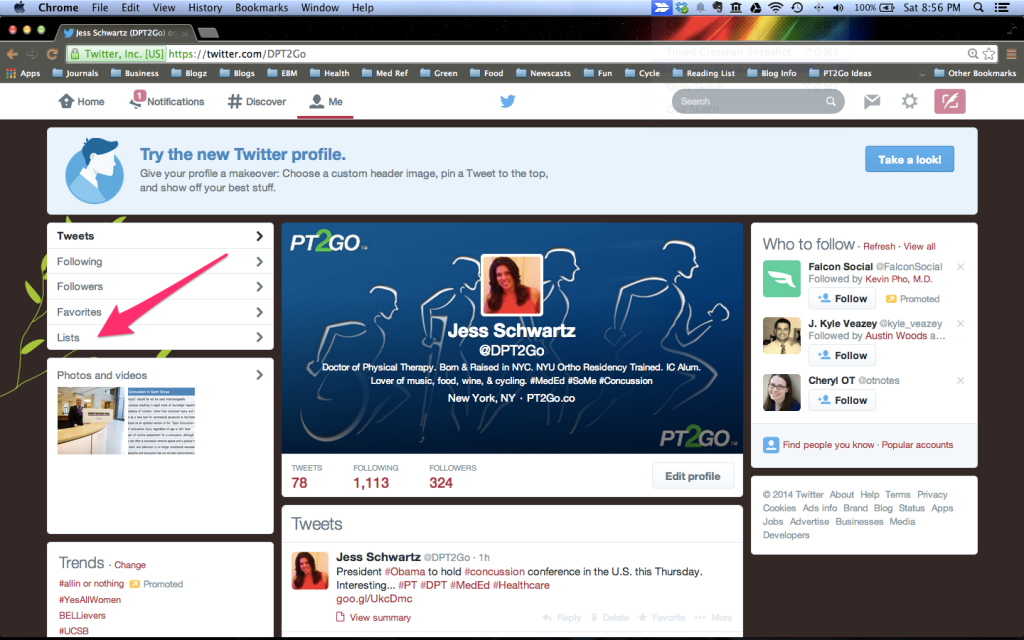
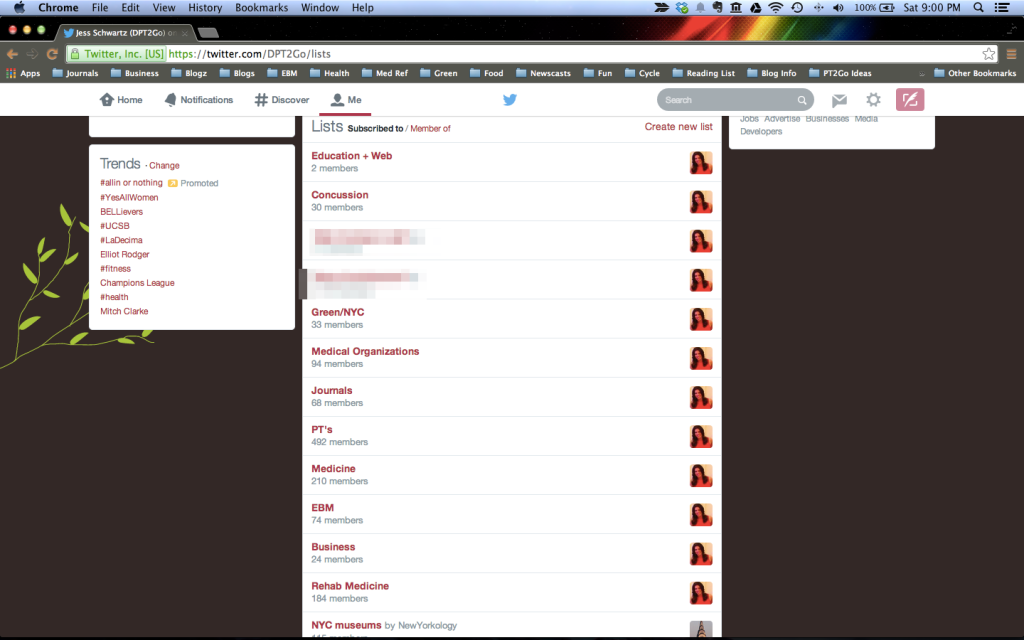
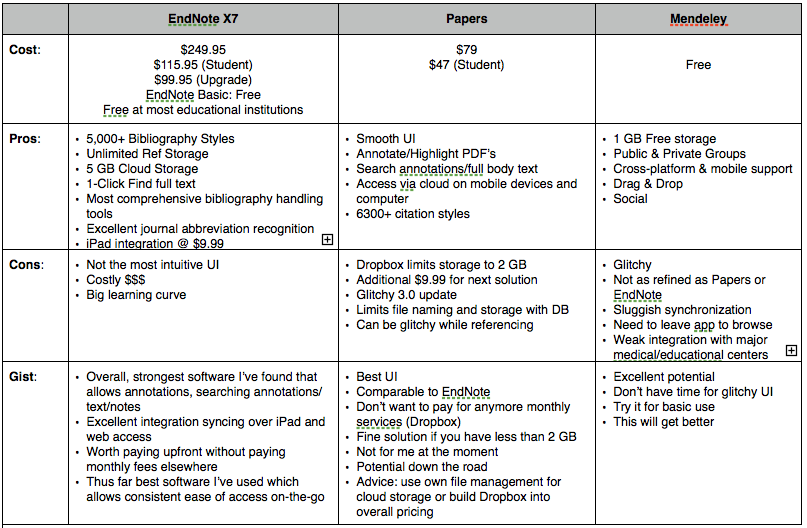
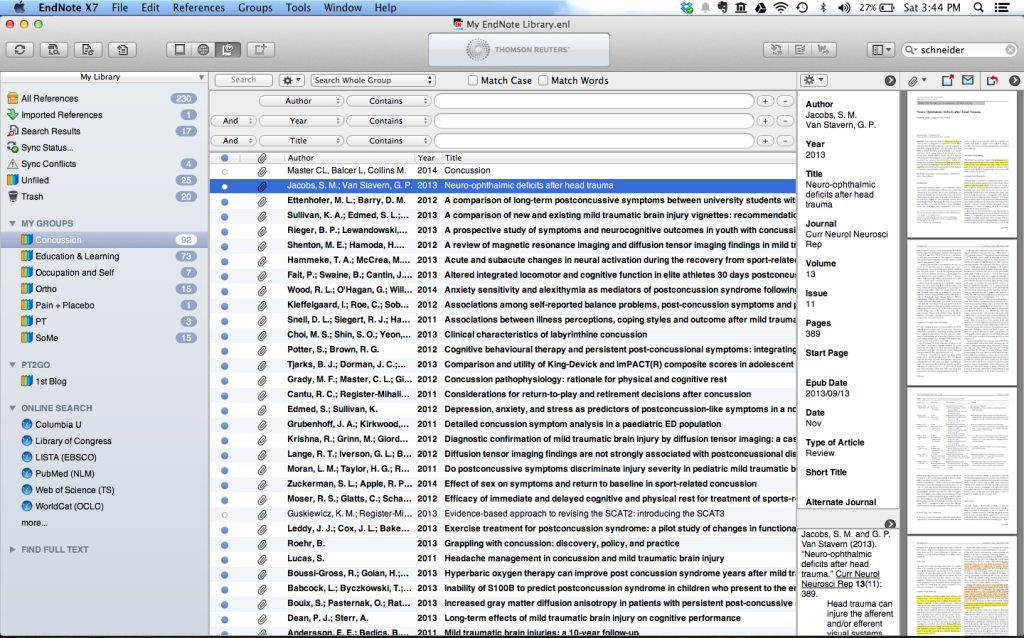
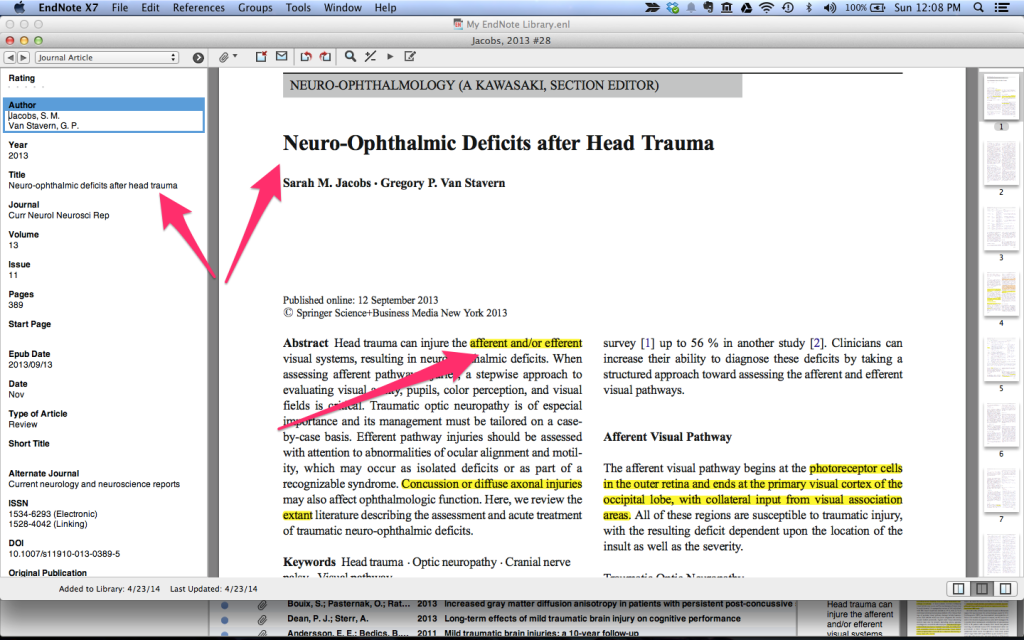
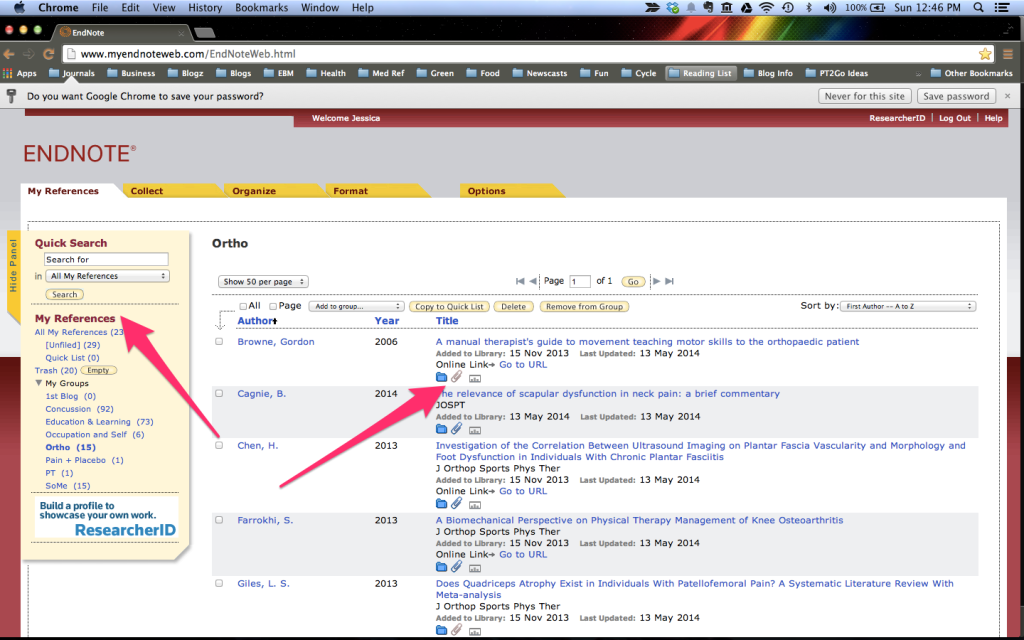
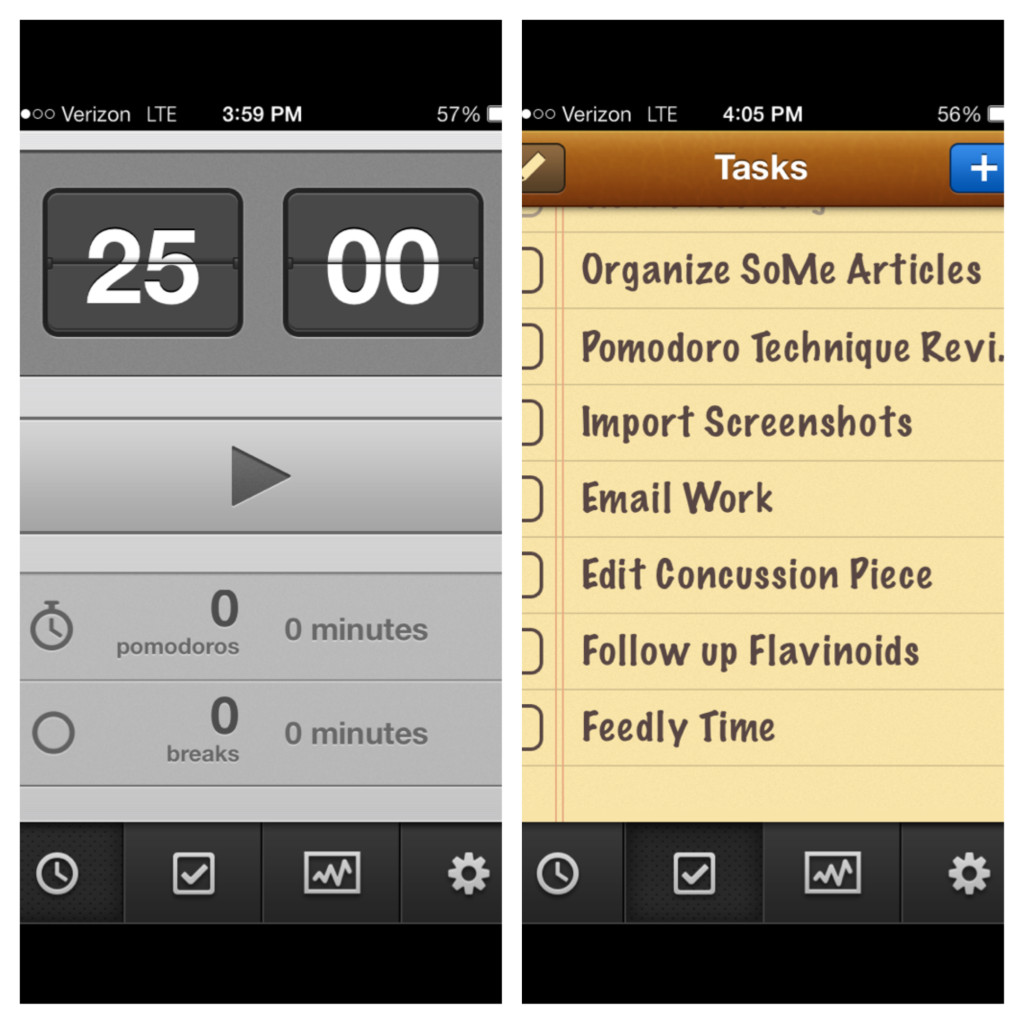
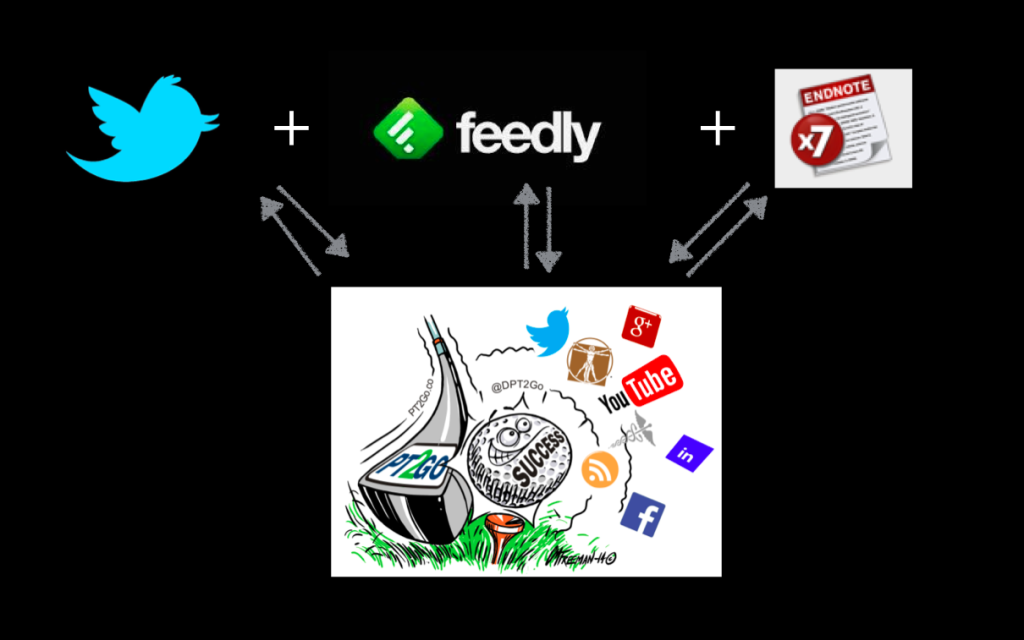
Pingback: Social Media & Medicine for Self-Directed L...
Very nice article. I certainly love this site. Keep writing!
Pingback: Gregory Smith